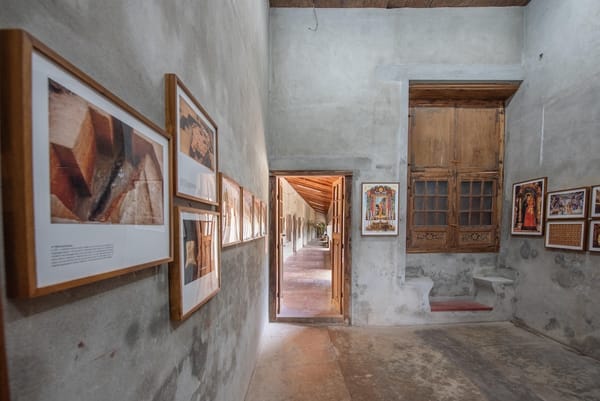Did Michelangelo Paint the Sistine Chapel Lying on His Back?
Contrary to popular belief, Michelangelo did not paint the Sistine Chapel lying on his back. This article separates myth from truth, revealing the ingenious techniques, engineering brilliance, and enduring legend behind one of art’s greatest achievements.

Few images in art history are as iconic as Michelangelo Buonarroti, flat on his back, paint dripping onto his face as he toils to create the Sistine Chapel ceiling. The image is cinematic—immortalized by films, textbooks, and popular lore. But like many myths surrounding the great artists of the Renaissance, this one deserves a closer look. Did Michelangelo really paint the Sistine Chapel lying on his back?
The answer, as with many historical legends, is both yes and no. It’s a story born from fragments of truth, artistic imagination, and centuries of retelling. To uncover what really happened, we must travel back to early 16th-century Rome—to a reluctant sculptor, an ambitious pope, and one of the most extraordinary artistic projects ever undertaken.
The Genesis of a Commission
In 1508, Michelangelo was already renowned, though not yet as a painter. His masterpiece David had been completed just a few years earlier in Florence, and his reputation as a sculptor was unsurpassed. Pope Julius II, a man of towering ambition and fiery temperament, summoned Michelangelo to Rome to design his tomb—a grand project featuring forty statues. But soon after, Julius changed his mind. He wanted Michelangelo to paint the ceiling of the Vatican’s Sistine Chapel instead.
Michelangelo was horrified. He had trained as a sculptor, not a painter, and saw fresco as inferior. “I am not a painter,” he reportedly protested. In a letter to his friend Giovanni da Pistoia, he later wrote of his misery:
“I’ve already grown a goiter from this torture, hunched up here like a cat in Lombardy… My brush drips paint on my face and I feel the back of my neck on my spine.”
This vivid description, combined with centuries of retelling, gave rise to the enduring image of Michelangelo painting while lying on his back. But was that actually how he worked?
The Myth of the Reclining Genius
The story of the “reclining Michelangelo” owes much to romanticized biographies and later artistic depictions. Giorgio Vasari’s Lives of the Artists (1550), the foundational text of Renaissance art history, painted Michelangelo as a divine genius who transcended human limits—a man willing to suffer for beauty and faith. Vasari described the physical strain and difficulty of the work, but not that Michelangelo painted lying down.
Later, popular culture filled in the blanks. The image of Michelangelo sprawled on scaffolding became an irresistible metaphor: the solitary genius literally sacrificing his body for divine art. In the 1965 film The Agony and the Ecstasy, Charlton Heston’s Michelangelo is shown painting on his back, grimacing through pain and fatigue. The cinematic drama made for good storytelling—and cemented the myth for generations.
Yet the reality of Renaissance fresco technique tells a very different story.
Engineering Genius
Painting the Sistine Chapel was a technical as well as an artistic feat. The chapel measures about 40 metres long and 14 metres wide, with a ceiling height of nearly 20 metres. To paint it, Michelangelo had to devise a system that would allow him to reach the ceiling safely, efficiently, and without damaging the fresco surface.
The papal architect, Donato Bramante, initially proposed building scaffolding suspended by ropes from holes in the ceiling. Michelangelo rejected the idea outright—such holes would mar the fresco and create uneven working surfaces. Instead, Michelangelo designed his own ingenious scaffolding system: a platform of wooden planks resting on brackets that projected from holes high in the chapel walls, far below the painted vault.
This structure formed a kind of bridge or walkway that could be moved in sections as he progressed. It allowed him to stand upright and paint overhead at close range. His assistants worked beside him, preparing the plaster and mixing pigments, but the composition and execution were largely his own.
The evidence is clear: Michelangelo did not paint lying on his back. He painted standing, with his head tilted backward for hours each day—a physically punishing position that led to back and neck strain, eye irritation, and fatigue.
His famous complaint in the letter to Giovanni da Pistoia—often cited as proof of the “back painting” myth—was poetic hyperbole, not a literal description.
The Technique of Fresco and Its Demands
Understanding fresco helps explain why painting while lying down would have been impossible. The buon fresco technique requires the artist to apply pigment to freshly laid wet plaster (intonaco). As the plaster dries, the paint chemically fuses with it, creating a durable surface. The artist must work quickly and precisely, often completing a section (called a giornata) before the plaster sets.
This process demands full control over gravity and brush movement. Painting overhead while lying on one’s back would have caused the wet pigment to drip uncontrollably and prevented the artist from maintaining steady lines or fine detail. Michelangelo’s figures—muscular, complex, and deeply sculptural—required precision that only a standing or leaning posture could provide.
In short, physics alone disproves the myth.
Michelangelo’s Reluctance and Mastery
Even standing upright, the experience was torturous. Michelangelo began work in 1508 and completed the ceiling in 1512, covering over 500 square metres with more than 300 figures. The project transformed from a simple design of apostles to a vast cosmological vision: nine central scenes from Genesis, surrounded by prophets, sibyls, and ancestors of Christ.
Despite his reluctance and the physical ordeal, Michelangelo’s work revolutionized Western art. His figures possess an anatomical grandeur drawn from his sculptural expertise—the Creation of Adam remains one of the most recognizable images in human history.

Ironically, the ceiling that began as a commission he tried to refuse became his crowning achievement.
Letter as Clue, Not Confirmation
So why did Michelangelo’s own words fuel the myth? His letter to Giovanni da Pistoia, often called the “Sistine Ceiling Sonnet,” is both humorous and tragic. It reads in part:
“I’ve got a goiter from this torture,
my belly’s pressed under my chin,
my beard points upward,
my memory’s crushed in my tomb,
my chest twists like a harpy’s.”
He exaggerates his misery with vivid bodily imagery—his beard pointing upward implies he’s looking skyward constantly, not lying down. The poem is an artist’s lament about discomfort, not a literal work report. Renaissance artists often used poetic exaggeration to express frustration or pride, and Michelangelo was no exception.
Anatomy of a Legend
So how did the myth persist? Partly because it fits the romantic narrative of artistic suffering. The image of a lone genius lying on his back, defying pain and gravity to create divine beauty, resonates emotionally. It also serves as an emblem of devotion—an artist physically prostrated before God’s ceiling.
Popular art history has always blurred the lines between fact and mythology. Leonardo da Vinci’s mirror writing, Van Gogh’s ear, Caravaggio’s temper—these details, true or exaggerated, make great stories. Michelangelo’s “reclining painter” simply joined their ranks.
Moreover, the myth thrived because few people understood the mechanics of fresco painting. Until modern restoration efforts in the 20th century revealed the true scale and complexity of Michelangelo’s technique, the public had only imagination to rely on.
Modern Scholarship and Restoration
When the Sistine Chapel underwent a major restoration between 1980 and 1994, experts studied Michelangelo’s methods in unprecedented detail. They discovered traces of his scaffolding holes along the chapel’s cornice, confirming the standing platform theory.
The cleaning also unveiled the brilliance of his original palette—vibrant blues, oranges, and greens hidden for centuries under soot and candle smoke. Far from being a dark, somber work painted in agony, the ceiling revealed itself as an explosion of colour, movement, and vitality.
The myth of the suffering, supine Michelangelo couldn’t withstand the empirical evidence. The truth is less theatrical, perhaps, but far more impressive: he executed one of the most technically demanding and theologically ambitious works of art while standing upright, painting above his head for four relentless years.
A Real Heroism of Craft
Acknowledging the truth doesn’t diminish Michelangelo’s achievement—it enhances it. Imagine the precision required to design and paint colossal figures across a curved ceiling, ensuring proportional harmony when viewed from the ground. Imagine doing so without modern scaffolds, cranes, or lighting, all while battling fatigue, plaster dust, and papal impatience.
His letters and later biographies depict a man tormented not just by the physical task but by perfectionism. He painted alone, dismissed assistants, and constantly reworked compositions. He even scraped away sections he found unsatisfactory—a near-impossible act in fresco.
The result was not merely decoration but theology in pigment—a visual symphony of creation, sin, and salvation.
The Power of Artistic Myth-making
So, did Michelangelo paint the Sistine Chapel lying on his back? No—he stood, craned his neck, and suffered for his art in a very different but equally grueling way. The myth endures because it captures something emotionally true: the image of the artist consumed by his work, transcending bodily limits to reach divine inspiration.
But the reality is more profound than the legend. Michelangelo’s genius lay not in suffering for art’s sake, but in mastering its physical and intellectual demands. He was not a passive victim of circumstance, but an engineer, thinker, and visionary who turned impossible conditions into creative triumph.
Perhaps, then, the myth persists because it speaks to our desire to see genius dramatized. Yet the truth—that a determined man, standing beneath a vault of plaster, painted his way into immortality—needs no embellishment.





